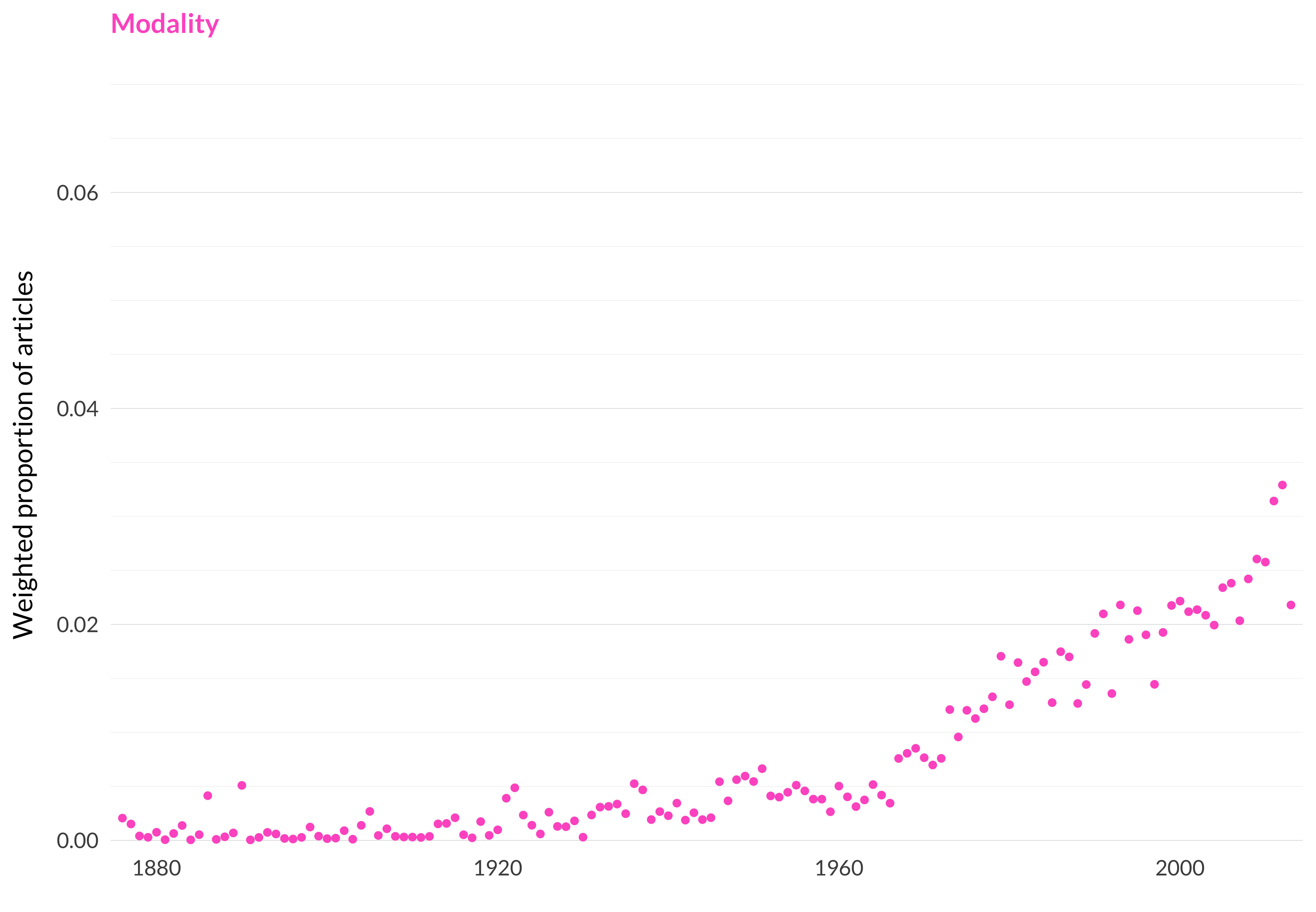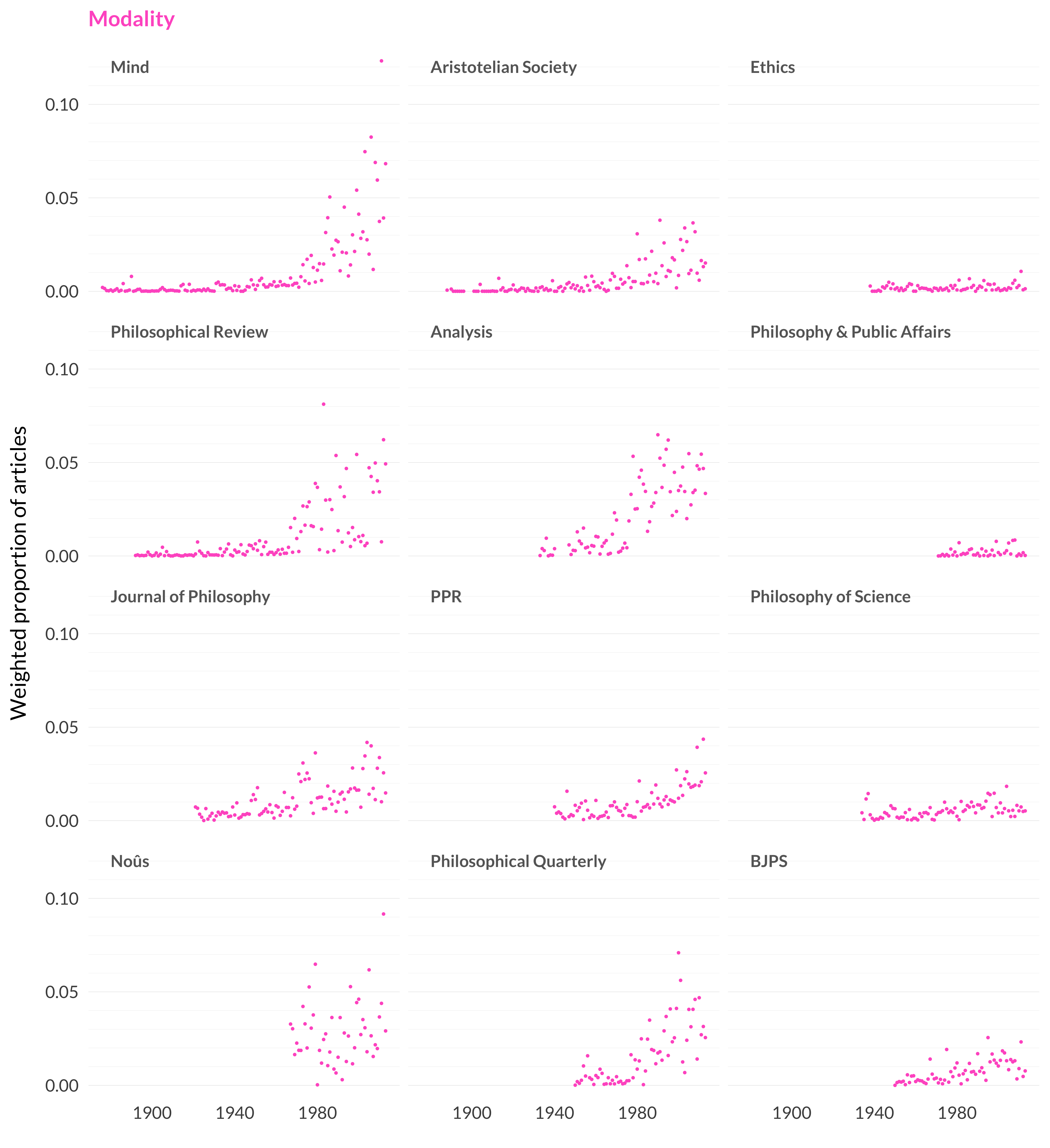2.80 Modality
Category: Metaphysics
Keywords: modal, worlds, counterpart, modality, lewis, dispositional, dispositions, actuality, disposition, essentialism, disposed, counterfactuals, break, actual, kripke
Number of Articles: 370
Percentage of Total: 1.1%
Rank: 39th
Weighted Number of Articles: 370.5
Percentage of Total: 1.2%
Rank: 31st
Mean Publication Year: 1993.1
Weighted Mean Publication Year: 1989.4
Median Publication Year: 1996
Modal Publication Year: 2012
Topic with Most Overlap: Composition and Constitution (0.0464)
Topic this Overlaps Most With: Composition and Constitution (0.0451)
Topic with Least Overlap: Liberal Democracy (0.00018)
Topic this Overlaps Least With: Feminism (0.00078)

Figure 2.184: Modality.

Figure 2.185: Modality articles in each journal.
Comments
The top graph makes it look like this is a story of more or less continuous growth from the early 1960s onwards. But under the surface the story is a little more complicated. The topic includes articles about the nature of modality, and in particular the nature of possible worlds, but also articles about the nature of dispositions.
There are a lot of ways to carve up metaphysics into topics. This one makes some sense, but is also a bit puzzling. Both work on modality and work on dispositions are more connected to work on counterfactual conditionals than they are to each other. The end result is convenient for my project; I get two debates that are both in metaphysics, and reasonably close to each other, in the one topic. It’s just funny to see them both separated from counterfactuals in this way.
David Lewis is as important to the journals from 1965 onward as any other philosopher, but he doesn’t have any one topic that is really centered around his work. This is as close as it gets. Twenty-one of the articles here are either by Lewis, or reference him in their title. (There are other articles with “Lewis” in the title, but they are about C. I. Lewis, not David Lewis.) My biggest regret of this project was that I couldn’t include the Australasian Journal of Philosophy because it wasn’t in the JSTOR database. That would have given a much better sense of how Lewis’s papers related to the general themes of the era.